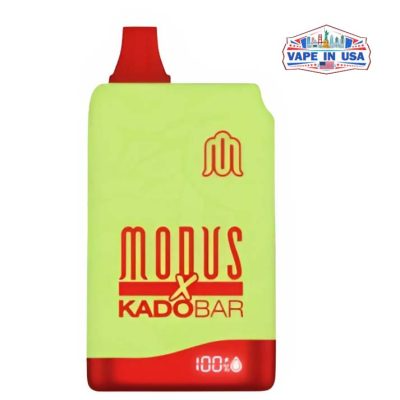Ever picked up a book simply because the cover caught your eye? Or did you feel an instant connection to a story just from its typography, cover, or spine design?
That’s no accident!
The psychology of book design plays a massive role in how readers perceive, interact with, and even judge a book before they turn the first page.
From the wonderful play of colors to fonts that incite feelings, this blog is all about the mind-boggling aspects of book design that influence people’s purchasing decisions.
Let’s take a deeper look into how they affect a reader’s emotions and compel them to pick a book!
Key Takeaways
- The psychology of book design plays with fonts, colors, and illustrations to affect a reader’s first perception of the book.
- Some of the widely used colors in book covers include Red, Blue, Yellow, Black, Green, and Purple. These colors represent thrill & romance, trust & calmness, happiness & warmth, mystery & elegance, nature & growth, and creativity & imagination, respectively.
- Some of the widely used fonts in books include serif, sans serif, script, and display fonts, all of which are used in distinct genres of books.
- Multiple individual professionals and companies offer book design services, including an overview of custom book design for your book.
The First Impression: Why Book Design Matters
We’ve all heard the phrase, “Don’t judge a book by its cover.” But let’s be honest—everyone does!
Your book’s design is most probably the first thing potential readers will notice, and it can highly influence their decision to buy it.
A well-designed book cover is more than just pretty; it’s a psychological tool that influences emotions and expectations. The right color palette and font choices can evoke curiosity, nostalgia, or excitement. On the other hand, the wrong choices can make a book feel amateurish, outdated, or simply unappealing.
The Psychology of Colors in Book Design
Colors have a profound impact on emotions and decision-making, playing a major role in the psychology of book design. It’s imperative to choose the right colors when designing a book because it’s not just about aesthetics; it’s responsible for a lot more. Influencing how readers feel before they even open the book.
Here’s a breakdown of some popular colors and their psychological effects.
Red – Passion, Drama, and Urgency
Often used in thriller, romance, or action-packed novels, red is bold, energetic, and attention-grabbing. It tends to draw you in instantly! In case you would have noticed, multiple bestsellers incorporate red as a primary color in their covers.
Blue – Trust, Calmness, and Intelligence
Blue exudes a sense of calm and reliability. It’s a popular choice for nonfiction, biographies, and self-help books because it instills trust and authority. Many authors use blue to give their books a professional and insightful feel.
Yellow – Optimism, Happiness, and Warmth
Bright, cheerful, and energetic—yellow is commonly seen in self-improvement books, comedies, and children’s literature. Yellow emits a sense of positivity and warmth, giving readers an uplifting energy and instantly communicating the overall vibe of the book.
Black – Mystery, Elegance, and Sophistication
Black is timeless, mysterious, and sophisticated. It’s a go-to color for thriller, horror, and fantasy genres. If your book deals with deep, dark themes, black can be the perfect choice.
Green – Nature, Growth, and Harmony
Green is often associated with wellness, nature, and balance. It’s commonly seen in books related to health, spirituality, and environmental themes. If your book has an earthy or healing aspect, green is a great option.
Purple – Creativity, Luxury, and Imagination
When it comes to creativity and mysticism, there’s no better color than Purple to depict it. It’s widely used in fantasy and science fiction book covers to evoke a sense of magic and wonder.
Each color has its own psychological impact, so selecting the right one for your book should align with your story’s theme and message.
The Influence of Fonts in Book Design
Remember: the choice of typefaces affects tone and readability!
Just like colors, fonts convey emotions, tone, and style, and it is important to use the correct fonts to portray your book the best way.
The right typography can make your book look modern, elegant, classic, or playful. Let’s explore some major fonts that the best custom book design online use in books:
Serif Fonts – Classic and Trustworthy
Serif fonts (like Times New Roman, Garamond, and Georgia) have small strokes at the ends of letters, which gives a traditional and reliable feeling. They are widely used in historical fiction, academic books, and literature where a classic, authoritative feel is desired.
Sans-serif Fonts – Modern and Clean
Sans-serif fonts (like Arial, Helvetica, and Futura) are sleek, simple, and contemporary. They work well for self-help books, business books, and tech-related content because they give a modern, straightforward impression.
Script Fonts – Elegant and Artistic
Script fonts mimic handwriting and add a personal, elegant touch. They are often used in romance novels, poetry books, or artistic genres that require a soft, stylish appeal.
Display Fonts – Bold and Eye-Catching
Display fonts are creative and grab a great amount of attention. They are ideally used for fantasy, horror, or experimental books. These fonts add uniqueness but should be used cautiously to ensure readability.
When choosing a font, make sure that your content is easily understandable in whatever font you’re selecting. A beautiful font won’t help if it makes your title or author name hard to read.
Balancing Colors and Fonts for Maximum Impact
Now that we know how colors and fonts influence perception let’s talk about how to combine them effectively.
Here are some tips:
- Match the Mood of the Book: A mystery novel with bright pink fonts might send the wrong signal. Instead, dark, sleek colors with serif fonts would better suit the theme.
- Ensure Readability: Avoid overly fancy fonts that may look beautiful but are hard to read. The goal is to attract readers, not confuse them.
- Use Contrast Wisely: Dark fonts on light backgrounds (or vice versa) improve readability and make the design pop.
- Test Different Combinations: Sometimes, what looks great in theory doesn’t translate well in practice. Experiment with different colors and fonts to see what works best.
With the rise of custom book design online, authors have more flexibility than ever to explore and refine their book covers without breaking the bank.
Bonus: White Space in Book Design
White space, often mistaken for just “empty” space, is actually a powerful tool in book design. It’s not wasted. It is intentional breathing room that helps the content stand out.
When used well, white space makes layouts feel less crowded and chaotic. It guides the reader’s eye smoothly across the page. It frames text, images, and other elements, creating balance and structure. This helps readers understand the information without feeling overwhelmed.
In addition to improving readability, white space adds a sense of sophistication to a book. Simple layouts with spacious margins, wide line spacing, and clean chapter openings often look more polished and professional.
Final Thoughts
The psychology of Book Design is more than just making a book look pretty. It’s about tapping into a reader’s emotions, creating strong first impressions, and ultimately influencing their decision to buy. Colors set the tone, fonts communicate style, and together, they shape how a book is perceived.
Whether you’re DIY-ing or hiring an affordable book cover design service, your cover, interior layout, and color/font selection should speak to your audience.
FAQs
What’s the ideal font size and line spacing for a book?
It varies based on the type of writing and who will read it, but usually, a font size between 10.5 and 12 points and a line spacing of 1.2 to 1.5 works well for regular text. For kids’ books or large print versions, use bigger text. Always check a few sample pages before you finish.
How do I make my book design accessible to all readers?
Use colors that stand out from each other, don’t rely only on color to show meaning, and choose easy-to-read fonts for those with dyslexia, such as OpenDyslexic or sans-serif fonts. Making your design accessible helps reach more people and shows that you care about your readers.
Who offers book design services?
Book design services are offered by freelance designers, publishing professionals, and specialized agencies.











Leave a Reply